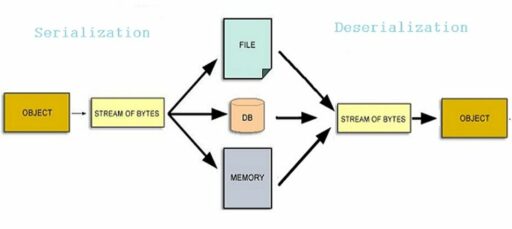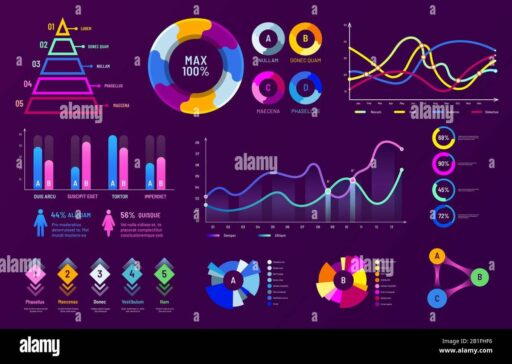Table of Contents
In the article ‘The Aesthetic Dimensions of Data: Exploring How ‘Data is Beautiful’,’ we delve into the fascinating intersection of data visualization and human aesthetic appreciation. We explore how data, when presented creatively, can transcend its functional role and evoke emotional responses, foster empathy, and enhance understanding. This article examines the multi-faceted relationship between data representation and human perception, the emerging field of data physicalization, and the role of aesthetics in data interaction. Furthermore, we consider the impact of data visualizations in both public and private spheres and look forward to the potential of AI in interpreting and creating aesthetically pleasing data displays.
Key Takeaways
- Data visualization benefits from anthropomorphizing, which can generate empathy and personalize the data experience, enhancing its impact.
- The concept of data physicalization brings a tactile dimension to data, encouraging interaction and a deeper connection with the information presented.
- Aesthetic pleasure derived from engaging with data can significantly enhance the user’s understanding and retention of information.
- Public and private data displays serve not only informational purposes but also contribute to the aesthetic quality of environments, influencing behavior and perceptions.
- Advancements in AI and machine learning are paving the way for systems that can evaluate and create aesthetically pleasing data visualizations, potentially transforming the field.
The Intersection of Data and Human Perception


Anthropomorphizing Data for Empathy
The concept of anthropomorphizing data involves attributing human characteristics to data representations to foster a deeper emotional connection and empathy. This approach can transform the cold, hard numbers into relatable stories that resonate with our human experiences. By humanizing data, we can create a more profound impact on the audience, encouraging them to engage with the information on a personal level.
One of the key benefits of anthropomorphizing data is the enhancement of empathy towards the subjects represented by the data. For example, when human rights data is visualized in a way that emphasizes the human element, it can elicit stronger empathetic responses from viewers. This is not just a theoretical concept; studies have shown that such visualizations can indeed generate more empathy for the data subjects.
The challenge lies in striking the right balance between data representation and humanization to ensure that the empathy generated is meaningful and not superficial.
While the practice is gaining traction, it’s important to consider the personal attitudes towards data visualization. People’s perceptions and attitudes can significantly influence how they interpret and emotionally connect with data. Rural communities, for instance, may have different perspectives on data visualization compared to urban ones, which can affect the level of empathy elicited by anthropomorphized data.
Personal Attitudes Towards Data Visualization
The way individuals perceive and interact with data visualizations is deeply personal and can vary widely. Personal attitudes towards data visualization are shaped by a myriad of factors, including cultural background, education, and personal experiences with data. For instance, a study in rural Pennsylvania revealed that data visualization is not just a tool for communication but also an extension of the individual’s identity and beliefs.
While some may find bar charts and graphs to be clear and efficient methods of communication, others might see them as impersonal or even intimidating. This dichotomy is evident in the varying success of data visualizations in engaging different audiences. For example, abstract interactive installations have been shown to attract more attention and curiosity in public spaces than informative data visualizations on large screens.
- Engagement with Data Visualizations
- Clear and efficient for some
- Impersonal or intimidating for others
- Varies with audience and context
The challenge lies in creating visualizations that not only convey information effectively but also resonate on a personal level, fostering a positive mindset and motivation.
Perception of Bar Charts and Graphical Representations
Bar charts serve as a fundamental tool in the realm of data visualization, offering a clear and straightforward method for comparing categorical data. The ease of interpretation that bar charts provide makes them a staple in both academic and business settings. This is particularly evident when considering the ubiquitous nature of bar charts in articles on topics such as data science and creative data visualization techniques.
The aesthetic appeal of a well-designed bar chart should not be underestimated. It can transform raw data into a compelling narrative, enhancing the viewer’s understanding and retention of information.
Race bar charts, a dynamic variant, illustrate the evolution of data over time, adding an element of storytelling to the static image. The popularity of these animated representations underscores the public’s desire for engaging and informative visual content. Stacked bar charts further expand on this by breaking down each category into sub-components, providing a deeper level of detail while maintaining visual clarity.
In the context of data analytics, the graphical representation of information is not just about presenting facts; it’s about crafting an experience that resonates with the viewer. Whether it’s through the use of color, animation, or composition, the goal is to make the data not only informative but also aesthetically pleasing.
The Art of Data Physicalization


Defining Data Physicalization
Data physicalization is a term that encapsulates the transformation of data into a tangible form, allowing for a multisensory experience of information. It represents meaningful data through physical shapes or materiality, encouraging exploration, understanding, self-reflection, and sharing of its meaning. This concept has gained traction in the last decade as a novel way to present and interact with data.
The essence of data physicalization lies in its ability to convey meaning beyond the raw numbers and charts. It offers an alternative avenue for engaging with data, particularly in settings where traditional digital displays are not effective or desired. For instance, physical representations of exercise data can create a more engaging experience, promoting deeper interaction and reflection on healthy activities.
Data physicalization expands the design space for data representation, offering a unique blend of aesthetics and functionality that can enhance the user’s connection to the data.
While the field is still evolving, the potential applications of data physicalization are vast, ranging from educational tools to public installations that encourage communal interaction with data.
Aesthetic Expectations in Data Physicalization
As we delve into the realm of data physicalization, we encounter a unique blend of aesthetics and information. The tactile and visual qualities of physical data representations are not merely functional; they carry an aesthetic value that influences our interaction with the data. This emerging field, which has seen significant interest in the last decade, is defined by the transformation of data into physical artefacts whose geometry or material properties encode information, thereby fostering exploration, understanding, and reflection.
The aesthetic expectations in data physicalization are multifaceted. On one hand, there is an anticipation for the physical form to be engaging and to invite interaction. On the other hand, the representation must remain faithful to the data it embodies. Here is a succinct table that outlines the core expectations:
| Expectation | Description |
|---|---|
| Engagement | The physical form should invite interaction and exploration. |
| Accuracy | The representation must accurately reflect the underlying data. |
| Aesthetics | The design should be visually and tactilely pleasing. |
| Reflection | It should encourage self-reflection and sharing of its meaning. |
The potential of data physicalization extends beyond mere data representation; it creates a narrative that can be physically experienced and interacted with, thus deepening our connection to the data.
In the context of personal activity data, physicalization can lead to a more profound awareness and reflection on one’s behavior. The tangible nature of this approach not only expands the design space for presenting data but also creates a more engaging experience. This, in turn, encourages deeper exploration and interaction, potentially leading to healthier activity patterns and anticipation of rewards in both public and private spaces.
Data as a Continuous Physical Narrative
Data physicalization transcends the traditional boundaries of digital graphs and charts, offering a multisensory experience that invites interaction and reflection. By embodying data in a tangible form, it becomes a part of our daily environment, seamlessly integrating into the fabric of our lives. This continuous narrative allows for a deeper connection with the data, as it can be touched, seen, and even lived with over time.
The process of transforming data into a physical form can be seen as a journey, one that involves several key steps:
- Selection of data that tells a compelling story
- Choosing materials that resonate with the data’s essence
- Designing a form that is both informative and aesthetically pleasing
- Ensuring the physicalization is accessible and encourages public interaction
The potential of data physicalization lies in its ability to foster a unique dialogue between the data and the individual. It’s not just about presenting numbers; it’s about creating an experience that resonates on a personal level.
As we continue to explore the possibilities of data physicalization, we are reminded of the lessons learned from projects like "Physicalizing Data for a Better World." These initiatives highlight the importance of engaging with data beyond the screen, encouraging us to reflect on our behaviors and potentially inspire positive change.
Aesthetic Pleasure in Data Interaction


The Role of Processing Fluency
Processing fluency, or the ease with which information is processed, plays a pivotal role in the aesthetic appreciation of data visualizations. The smoother the cognitive processing, the more pleasing the data representation is perceived to be. This principle is not only fundamental in understanding how individuals interact with data but also in designing visualizations that are both informative and engaging.
When data is presented in a manner that aligns with our cognitive preferences, it can lead to a more intuitive and satisfying experience. For example, consider the following table that outlines participant comprehension ratings for two versions of instructional materials:
| Version | Completely Understand | Somewhat Understand | Do Not Understand |
|---|---|---|---|
| 1 | 54.2% | 44.8% | 1% |
| 2 | 50% | 49% | 1% |
This table succinctly demonstrates that a majority of participants found both versions to be clear, yet there is a slight preference for Version 1. Such insights are invaluable when refining the presentation of data to enhance processing fluency.
The design of data visualizations should not only convey information efficiently but also create a seamless and aesthetically pleasing user experience.
Ultimately, the goal is to craft visualizations that are not only easy on the eyes but also on the mind, allowing for quick comprehension and a deeper connection with the data presented.
Personalized Image Aesthetics
The concept of Personalized Image Aesthetics Assessment (PIAA) represents a significant leap in the customization of visual data representation. High-resolution images that are clear and visually appealing enhance the overall aesthetic of data visualization. Choosing suitable images is crucial, as they can transform a mundane chart into a captivating story. This personalization is not just about aesthetics; it’s about creating a connection between the data and the individual.
Recent advancements in deep learning have paved the way for constructing PIAA models. These models are tailored to an individual’s preferences, ensuring that the visual data resonates on a personal level. For instance, a model might take an image and, through the individual’s interaction history, adapt to present data in the most aesthetically pleasing manner for that user.
The beauty of data lies not only in its clarity and precision but also in its ability to be molded to our personal aesthetic preferences.
The table below illustrates the components of a PIAA model as proposed in recent literature:
| Component | Description |
|---|---|
| Deep Learning Model | Takes an image as input and adapts to individual preferences |
| Interaction History | Uses past interactions to refine aesthetic assessments |
| Personalization | Ensures the data visualization is aligned with user preferences |
Engagement Through Tangible Data
The concept of data physicalization transcends traditional visualization by embodying data in a form that can be touched and interacted with. This tangible approach to data representation has shown to foster a deeper connection between the individual and their personal metrics, leading to increased engagement and reflection. By transforming abstract numbers into physical objects, users can more intuitively grasp the significance of their data, leading to more meaningful insights and actions.
The tactile experience of data physicalization invites users to engage with their data in a more profound way, encouraging exploration and personal reflection.
For example, fitness data physicalized as 3D printed sculptures or even edible rewards like chocolate, not only serves as a novel form of feedback but also integrates seamlessly into the user’s daily life. This integration prompts continuous interaction and can significantly enhance motivation for healthy behaviors. The following list outlines the benefits of tangible data engagement:
- Encourages deep exploration of personal data
- Facilitates interaction and reflection
- Enhances anticipation and motivation for activities
- Allows for personalization and sharing of experiences
While the potential of data physicalization is vast, research into its effects in public spaces is still emerging. The ability to share and compare physicalized data in communal settings could lead to new forms of social interaction and collective goal-setting, further amplifying the engagement factor.
Data Visualization in Public and Private Spaces


Urban Landscapes and Data
The integration of data into urban landscapes is not just a technical challenge but an aesthetic one as well. Designers are tasked with embedding data in a way that enhances, rather than detracts from, the beauty of public spaces. This involves a delicate balance between functionality and visual appeal, ensuring that data displays contribute positively to the urban aesthetic.
The challenge lies in creating data physicalizations that are harmonious with their surroundings, offering a seamless blend of information and environment.
Urban data physicalization can take many forms, from interactive installations to subtle environmental cues. Here are a few examples of how data can be woven into the fabric of city life:
- Utilizing dynamic lighting to reflect real-time data trends
- Embedding data into pavement or building materials
- Creating green spaces that change with data inputs, such as adjusting the color or pattern of plantings
These initiatives not only serve to inform but also to engage citizens, making data a part of the collective urban experience. As we move towards future cities, the fusion of online and offline realities becomes increasingly significant, with public services poised to become more engaging and efficient through urban technology and embodied interaction.
The Impact of Public Data Displays
Public data displays have the potential to transform the way communities engage with information, turning passive observation into active participation. The presence of data in public spaces can catalyze social interaction and enhance communal awareness. For instance, when physical activity (PA) data is showcased in urban environments, it not only motivates individuals but also triggers communal dialogue and curiosity.
The abstract and interactive nature of data physicalization in public spaces attracts more attention than traditional informative displays. This suggests a shift towards a more engaging and exploratory approach to presenting data.
However, the impact of such displays extends beyond mere attraction; they can influence behavior and foster a culture of health and activity. Research indicates that representing fitness-related data in public contexts can significantly affect motivations for physical activity. Yet, the exploration of data physicalization in public and social contexts is still in its infancy, with much to be discovered about its value and technical feasibility.
- Public displays can motivate physical activity
- They encourage public communication about personal data
- Interactive installations generate more engagement than static displays
- There is a need for further research on public data physicalization
Digital vs. Physical Rewards
The debate between digital and physical rewards is a fascinating aspect of how data visualization impacts our motivation and sense of achievement. Physical rewards often carry a weight of permanence and tangibility that digital accolades can’t match. For instance, in the context of fitness apps, users typically receive digital medals on their screens for completing challenges. However, the introduction of physical rewards, such as medals displayed in public spaces, can provide a stronger incentive and a more profound sense of accomplishment.
The transition from private digital rewards to public physical displays can significantly enhance the perceived value of the reward, fostering a deeper connection and a longer-lasting impact.
The following points highlight the differences in perception between digital and physical rewards:
- Digital rewards are convenient and instantly accessible but may lack the emotional resonance of physical items.
- Physical rewards, like medals or trophies, serve as tangible milestones and can stimulate reflection and a sense of pride.
- Public recognition through physical displays can amplify the impact of the reward, making it more meaningful to the recipient.
Ultimately, the choice between digital and physical rewards may depend on the context and the desired outcomes. While digital rewards offer immediacy, physical rewards can create a narrative of achievement that persists in the physical world, potentially motivating continuous behavior and engagement.
Towards an AI Understanding of Aesthetics


AI and the Perception of Beauty
The quest to imbue artificial intelligence with the ability to discern beauty parallels the intricate processes observed in human visual perception. The convergence of AI and aesthetic appreciation offers a glimpse into a future where machines can engage with art and design in meaningful ways. The development of AI systems for aesthetic evaluation hinges on an integrative approach, combining scientific insights from neuroaesthetics and the humanities with advanced computational models.
- Understanding the nuances of beauty and ugliness is pivotal for AI aesthetic evaluation.
- AI systems must be tailored to recognize the subjective nature of beauty, accounting for individual differences in perception.
- The integration of deep learning with agent technologies promises to enhance AI’s ability to evaluate aesthetics.
The challenge lies in transcending mere data analysis to capture the essence of beauty that resonates on a human level.
Recent studies suggest that AI’s reliability in judging beauty surpasses its ability to detect ugliness, indicating a potential bias in aesthetic evaluations. This underscores the need for distinct strategies when assessing beauty and ugliness. The pursuit of an AI understanding of aesthetics is not just a technical endeavor but a multidisciplinary one, necessitating a synergy of scientific knowledge and creative intuition.
Integrating AI with Traditional Models
The fusion of AI with traditional models of aesthetic evaluation represents a significant leap forward in the development of intelligent systems capable of understanding beauty. Agent technology has emerged as a pivotal approach in this integration, combining the strengths of conventional deep learning models with the advanced capabilities of large language models (LLMs). This synergy aims to harness the aesthetic diffusion model, which can rapidly generate visually appealing designs based on input parameters.
The process of constructing Personalized Individual Aesthetic Assessment (PIAA) models exemplifies this integration. One method involves training a General Individual Aesthetic Assessment (GIAA) model on a dataset of aesthetic evaluations and then refining it with personal data to create a PIAA model. Alternatively, a GIAA model can serve as a foundation, supplemented by a module that predicts deviations from general aesthetic evaluations to individual preferences, thus forming a more tailored PIAA model.
The challenge lies in not only creating a neural network from scratch but also in leveraging existing LLMs that may already embody a rudimentary structure of aesthetic judgment.
As we look to the future, the convergence of scientific knowledge of beauty with AI will likely accelerate, leading to more sophisticated models that can evaluate aesthetics with a degree of nuance akin to human perception.
The Future of Aesthetic Evaluation in AI Systems
As AI systems evolve, the integration of scientific knowledge about human perception of beauty becomes crucial. The future of aesthetic evaluation in AI hinges on the ability to understand and replicate the nuanced human responses to beauty and ugliness. This requires a multidisciplinary approach, drawing from the humanities, neuroaesthetics, and advanced computational models.
The challenge lies in creating AI that not only mimics human aesthetic judgment but also appreciates the complexity and subjectivity inherent in such evaluations.
To achieve this, researchers are experimenting with agent technologies that combine traditional deep learning models with large language models (LLMs). The table below summarizes the performance of a recent AI model, GPT-4V, in aesthetic evaluation tasks:
| Task | Prediction of Group Average | Prediction of Individual Evaluation |
|---|---|---|
| GPT-4V Performance | Superior | Insightful |
These developments suggest a promising direction for AI systems that can more authentically engage with the human experience of beauty, potentially transforming how we interact with and appreciate art and design.
Conclusion
In the exploration of the aesthetic dimensions of data, we have uncovered the profound impact that beauty and design can have on our engagement with data. From the anthropomorphic visualizations that elicit empathy to the tangible rewards of data physicalization, it is evident that aesthetics play a crucial role in how we perceive and interact with information. The studies and experiments cited throughout this article demonstrate that data is not just a cold, hard collection of numbers, but a canvas for creativity and personal expression. As we continue to integrate data into our daily lives, the challenge remains to present it in ways that are not only informative but also visually and emotionally resonant. The future of data visualization and physicalization holds great promise, as it moves towards a more holistic approach that values the human experience as much as the data itself. The beauty of data lies not only in its ability to inform but also in its power to inspire.
Frequently Asked Questions
What is the significance of anthropomorphizing data in data visualization?
Anthropomorphizing data can make abstract figures more relatable, fostering empathy and a deeper understanding of the human elements behind the numbers, as demonstrated in studies on human rights data visualization.
How do personal attitudes affect the perception of data visualization?
Individual attitudes towards data visualization can greatly influence how data is received and understood. Personal biases, experiences, and the level of data literacy can shape the interpretation of visualized data.
What role does aesthetic pleasure play in interacting with data?
Aesthetic pleasure can enhance user engagement and satisfaction when interacting with data. It contributes to processing fluency and can make the experience of analyzing data more enjoyable and memorable.
How does data physicalization contribute to our understanding of data?
Data physicalization translates data into physical forms, making it more tangible and accessible. This can encourage exploration, reflection, and sharing, leading to a deeper engagement with the data.
What impact do public data displays have in urban landscapes?
Public data displays can enrich urban landscapes by integrating data-driven narratives into the environment. They can influence public behavior, enhance community engagement, and provide insights into societal trends.
Can AI systems understand and evaluate aesthetics in data visualization?
AI systems are being developed to evaluate aesthetics by mimicking human perception of beauty. Integrating traditional models with advanced algorithms, AI may soon contribute to the aesthetic evaluation of data visualizations.





